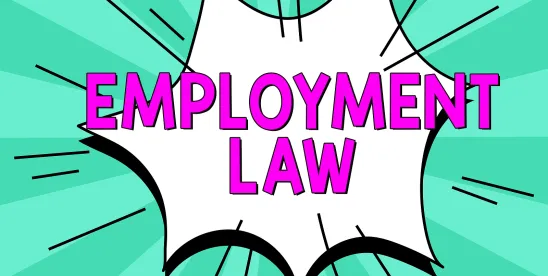Towards the end of last year, the EAT in De Bank Haycocks v ADP RPO UK Ltd caused a bit of a stir in employment law circles when it suggested that even in smaller-scale redundancy situations (i.e. where collective redundancy consultation obligations are not triggered), there should be “general workforce consultation”. Unhelpfully for employers, it did not then shed any light on what this might look like, how long it should last, who it should involve, etc.
ADP decided to reduce a recruitment team from 16 to 14 following a reduction in demand for its services in light of the pandemic. Behind the scenes, the team’s manager conducted a scoring exercise. Two employees were identified as potentially redundant, Mr De Bank Haycocks (DBH) and one other employee who went voluntarily.
DBH was invited to a meeting at which he was advised of the need for redundancies, that a selection matrix scoring process would be used to determine who was selected for redundancy (even though this had in fact already taken place) and that he could ask questions and suggest alternative approaches to the proposed reduction. The company held two further meetings with DBH before he was dismissed. At no point pre-dismissal was he told his scores from the selection exercise, although he was provided with them before the appeal meeting. DBH brought an unfair dismissal claim alleging, among other things, that there had been a failure to consult properly.
At first instance, the Employment Tribunal dismissed DBH’s claim on the basis that the appeal had been conducted correctly enough to repair the cracks in the pre-dismissal consultation. Its decision was overturned by the EAT, which concluded that “consultation took place much later than the formative stage and the ET erred in concluding that the consultation was reasonable in the absence of an explanation why the general approach did not apply. The appeal did not correct the failure to meaningfully consult at the formative stage and the dismissal was unfair”.
As highlighted above, the EAT also controversially suggested there should have been “general workforce consultation” before the company carried out individual consultation with DBH, as it was important even in small-scale redundancy situations that an employer had the opportunity to get input from the workforce, e.g. about other means by which it could minimise the impact of the redundancy situation.
The good news for employers is that the Court of Appeal has now overturned the EAT’s decision. It said the EAT appeared to be seeking to fill what it perceived to be an undesirable gap created by the fact that collective redundancy consultation obligations do not apply to smaller scale redundancy situations. If such a gap exists, said the Court, this was a matter to be addressed by considered legislation or Acas guidance, and not on the hoof by the courts.
Our key takeaways are as follows:
- There is no requirement in smaller-scale redundancy situations for an employer to consult the workforce at a collective level on the proposed redundancies. The Court of Appeal did, however, say that this does not mean that individual consultation should only ever address individual matters. It is good practice for employees to be given, even in the course of individual consultation, the opportunity to express their views on any issue that may affect the risk of their dismissal or its consequences, whether it is peculiar to them as an individual or common to the affected workforce as a whole.
- As per previous case law, consultation with individual affected employees about proposed redundancies should take place when the employer’s proposals are still at a formative stage. This does not necessarily mean “early consultation” in a temporal sense; what matters is that the employer has an open mind and there is still scope in principle for the employee to influence the employer’s decision. Clearly, if consultation takes place later in the process, there is a greater risk that a Tribunal might find that the decision-maker had already made up their mind, but that will depend on the particular facts of the case.
- The Court of Appeal said it was “bad practice” for ADP to carry out the redundancy selection scoring exercise before individual consultation had commenced. However, this was not fatal to the fairness of the dismissal. A dismissal would only be unfair if the employee had been deprived of a genuine opportunity to influence the employer’s decision to terminate. The Court of Appeal said that in this case ADP had clearly departed from good practice and were only saved by what the Tribunal found to have been the careful consideration given to the scoring at the appeal hearing.
- We recognise that in practice, many employers would adopt the same process as ADP in a small-scale redundancy exercise, namely jump straight to selection followed by individual consultation. To do otherwise would potentially require employers to alarm and unsettle substantial proportions of their workforce for no good reason in circumstances where they can reasonably have a fair idea from the start of which few individuals will actually be affected. In light of the Court of Appeal’s comments, employers should be cautious about doing this.
- However, it is our view that subject to three provisos, this will continue to be the appropriate way forward in many cases. First, that the preliminary (pre-consultation) scoring exercise must be carried out in good faith and subject to all the usual principles around the fair application of objective criteria. Second, that the outcome of that process should be a redundancy proposal and not a decision (meaning that those in the pool not put at risk cannot yet be assured that their jobs are safe). Last, that the subsequent consultation is again genuine and does allow the employee a real opportunity to challenge that provisional selection. That means that they must have been given beforehand sufficient details of the selection criteria and their performance/score against them to enable meaningful representations in response.
It is also important to remember that it is a question of fact and degree as to whether consultation is adequate and it is not automatically unfair that there is a lack of consultation in a particular respect. Furthermore, even if the consultation process is held not to be sufficient, it is still open for an employer to run the so-called Polkey defence, namely that any compensation awarded should be reduced to reflect the fact or likelihood that it would have been dismissed even if the employer had followed a fair procedure.




 />i
/>i

